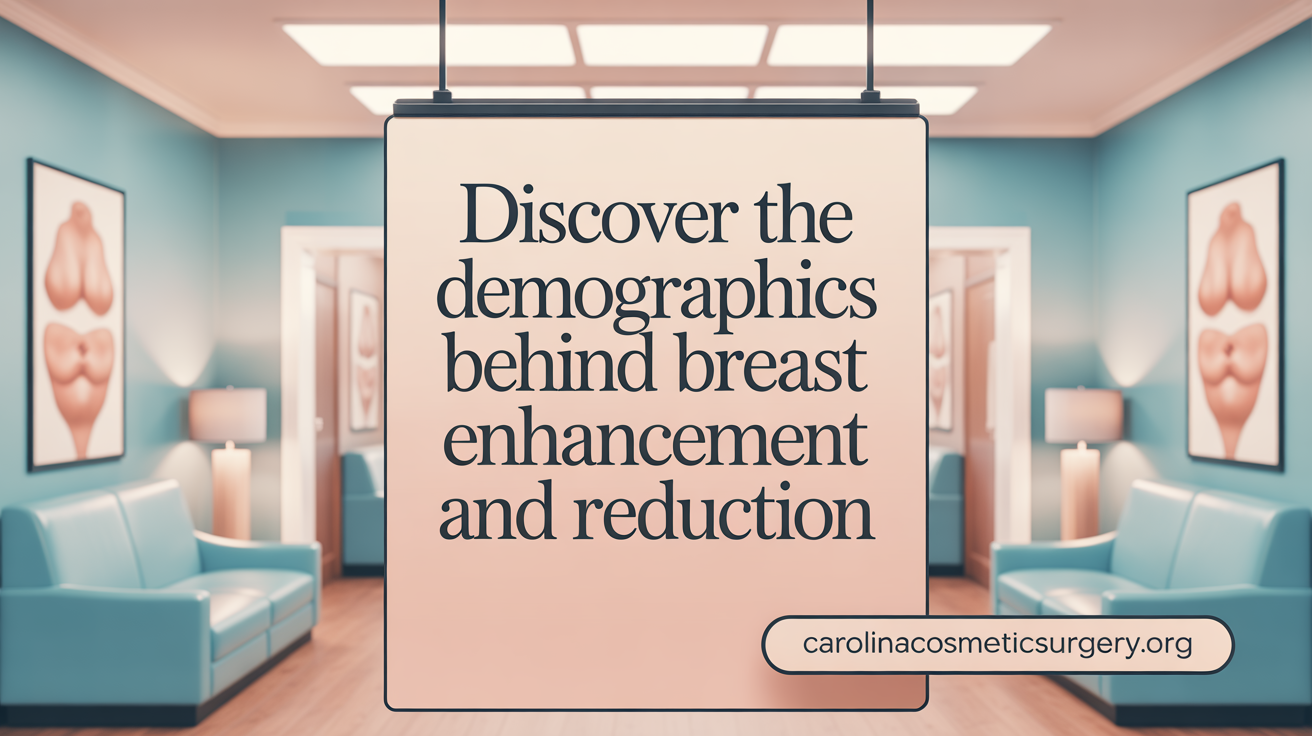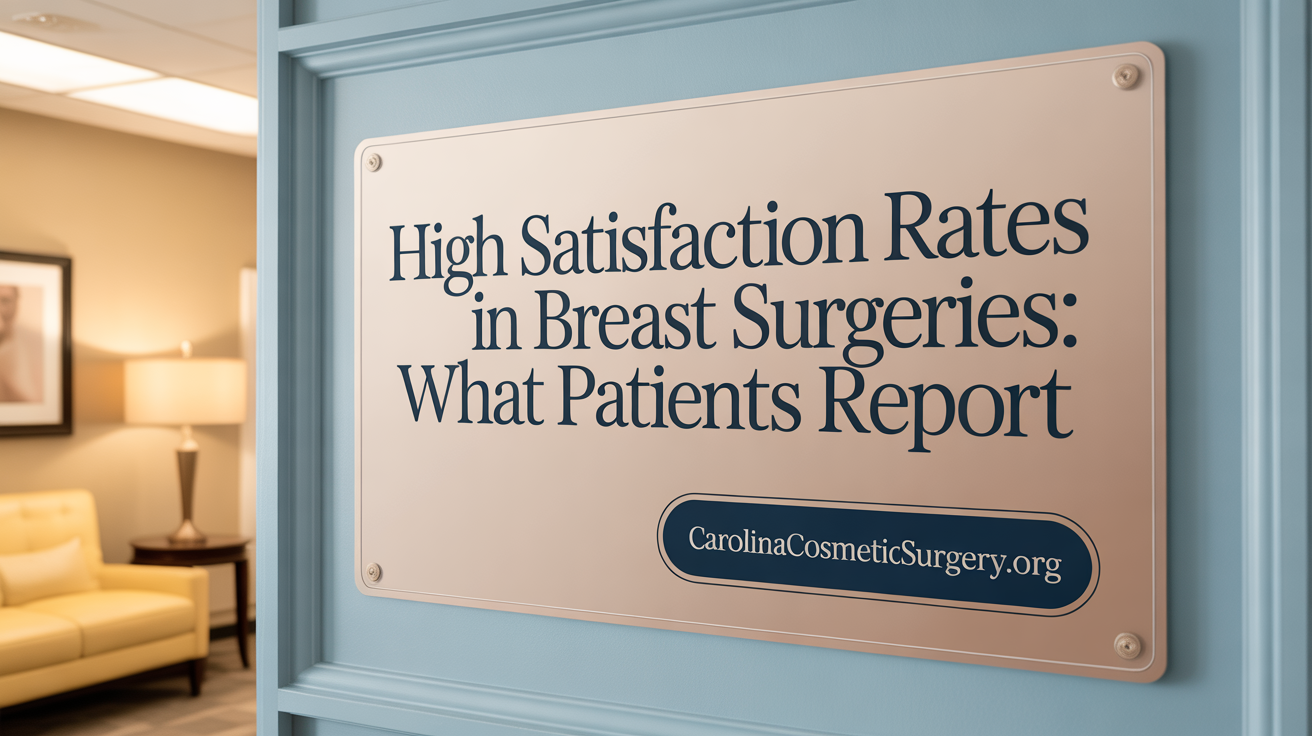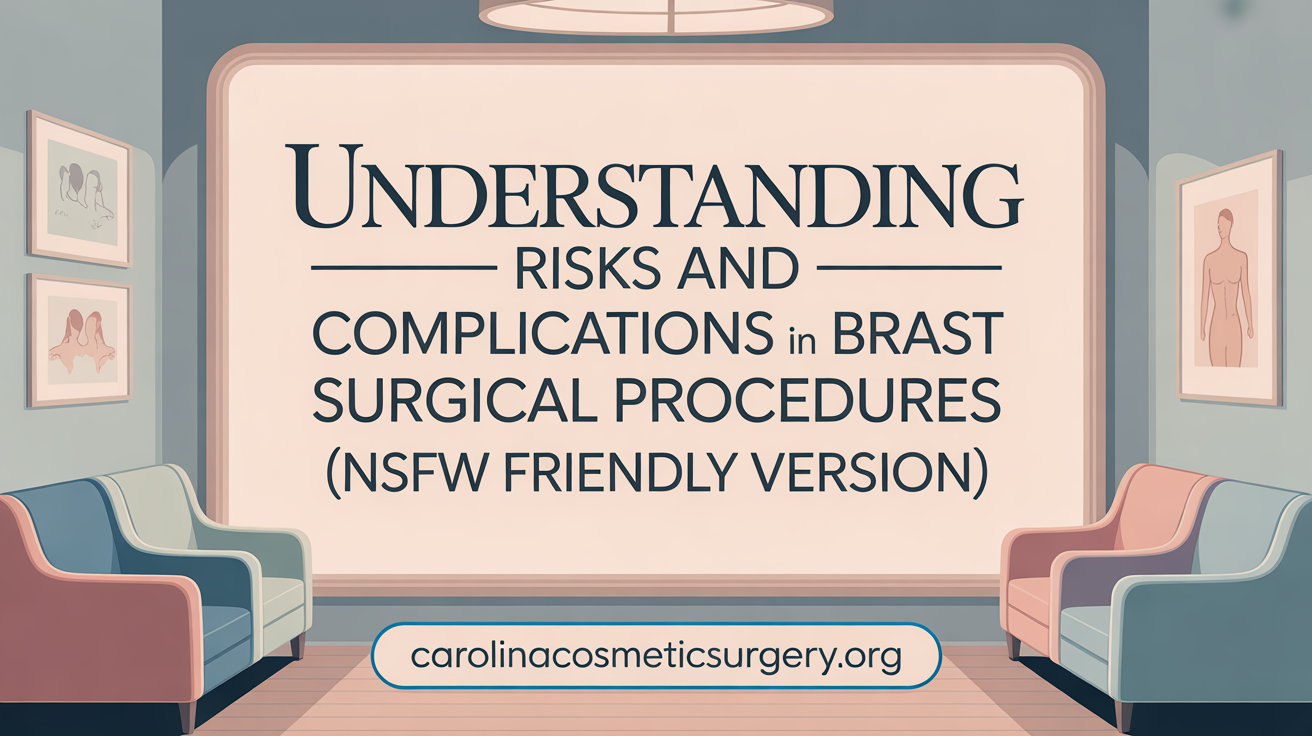Understanding the Landscape of Breast Surgeries
Breast augmentation and reduction surgeries remain among the most sought-after procedures worldwide, reflecting evolving aesthetic preferences and advances in surgical techniques. This article provides an in-depth look at the latest statistics, demographic trends, surgical outcomes, safety considerations, and industry growth, offering readers a comprehensive overview of these transformative procedures.
Global Prevalence and Volume of Breast Augmentation and Reduction Surgeries

What are the general statistics and prevalence of breast augmentation and reduction surgeries worldwide?
Breast augmentation is the most frequently performed cosmetic plastic surgery worldwide, with nearly 300,000 procedures in 2022 according to American Society of Plastic Surgeons (ASPS). This high volume reflects its popularity, especially in the United States where over 300,000 procedures were conducted in 2017, representing about 17% of all cosmetic surgeries that year.
Other countries like Brazil and Germany also have high demands for breast augmentation, positioning these countries among the global leaders in cosmetic procedures. The trend indicates a steady increase over recent years, fueled by societal acceptance, improved surgical techniques, and broader availability.
Breast reduction surgeries, while less numerous, have seen a significant rise of about 54%, highlighting an increased focus on physical health and well-being. Annually, around 100,000 individuals undergo breast reduction, primarily for symptom relief rather than purely aesthetic purposes.
Overall, these procedures are particularly popular among women aged 19 to 50, with women aged 20-29 and 30-39 forming the largest age groups undergoing these surgeries. The growth trend is consistent, with a 41% rise in breast augmentation procedures since 2000, reflecting a global shift towards cosmetic enhancement and body positivity.
While specific global data are limited, the demand and number of procedures continue to grow, showing that breast surgeries remain a dominant segment within cosmetic surgery worldwide.
Demographic Patterns: Who Undergoes Breast Surgery?

What demographic patterns and patient age groups are most common for breast augmentation and reduction procedures?
Breast augmentation is especially popular among women aged 19 to 35, who account for nearly half (47%) of all procedures. The typical patient age for augmentation is around 34 years, with women in their 30s being the most prominent group. This aligns with its status as the most common cosmetic surgery procedure in the United States.
In contrast, breast reduction surgery attracts a broader age demographic, often including teenagers, middle-aged women, and older adults. About 29% of breast reduction patients are aged 40 to 54, and the procedure is also common among women in their 30s. Since breast reduction often addresses physical symptoms like pain and skin rashes, it appeals to women across various life stages.
Younger women under 30 do participate in these surgeries, but the percentage is smaller. Women aged 36 to 50 constitute approximately 38% of breast augmentation patients, while women 51 to 64 make up around 12%. Women older than 65 represent about 2%, and girls aged 18 or younger are roughly 1%.
Overall, women in their 30s are the main demographic for breast augmentation, while breast reduction caters to a wider age range, including adolescents and older women, reflecting its functional and aesthetic benefits.
Surgical Outcomes and Patient Satisfaction Rates

What are the typical surgical outcomes, success rates, and patient satisfaction levels for breast augmentation and reduction surgeries?
Both breast augmentation and reduction surgeries generally have high success rates and are associated with high patient satisfaction. According to recent data, approximately 98% of women who undergo breast augmentation feel that their expectations are either fully met or exceeded. Similarly, satisfaction rates following breast reduction procedures are also very high, often surpassing 90%.
Patients typically experience significant physical improvements, such as relief from back, shoulder, or neck pain, along with aesthetic benefits like improved breast contour and upper-pole fullness. The procedures also lead to positive psychological effects, including enhanced self-esteem, body image, and overall quality of life.
These beneficial outcomes are consistent across different surgical techniques. For instance, the increased use of inframammary incisions and submuscular implant placement has contributed to effective results with minimal complications. The combination of breast reduction with implants further supports improvements in both physical symptoms and aesthetic appearance, leading to high overall patient satisfaction.
In conclusion, breast surgery outcomes are generally very favorable, with most patients reporting physical relief, aesthetic enhancement, and positive psychological impacts—making them some of the most successful procedures in cosmetic surgery.
Common Risks and Complications to Consider

What safety concerns, risks, and complication rates are associated with breast augmentation and reduction surgeries?
Breast surgeries, including augmentation and reduction, involve various potential risks and complications. The most common risks include bleeding, infection, and wound healing issues. Capsular contracture, where scar tissue around the implant tightens, occurs in approximately 10-17% of patients over the long term and can cause pain and deformity.
Implant-related complications such as rupture or malposition can also happen. For saline and silicone implants, rupture rates increase over time, and both types may require surgical correction. Asymmetry and rippling are other possible issues that may affect cosmetic outcomes.
An important rare but serious complication linked to textured breast implants is breast implant-associated anaplastic large-cell lymphoma (BIA-ALCL). This lymphoma is very uncommon, with a lifetime risk of about 1 in 30,000 women with textured implants. BIA-ALCL typically presents as swelling or a mass around the implant and requires prompt diagnosis and treatment.
Both breast augmentation and reduction involve risks to breast sensation, which can decrease or sometimes increase temporarily postoperatively. Patients are advised to undergo regular monitoring, as some complications, such as capsular contracture and implant rupture, may develop years after surgery.
Overall, complication rates for these procedures are at least 1%, with most issues being correctable through additional surgery or medical management. Proper patient counseling and choosing experienced surgeons help minimize these risks.
Evolution of Surgical Techniques and Implant Technology
How have surgical techniques and technologies for breast augmentation and reduction evolved over time?
Breast augmentation techniques have seen substantial improvements since their inception. In the 1960s, the debut of silicone gel implants marked a pivotal moment, providing more natural-feeling results compared to earlier methods.
Over the years, surgeons have refined their approaches to optimize outcomes. Presently, there is a notable preference for inframammary incisions, which now account for about 80% of procedures, up from 68% in earlier years. These incisions ensure better visibility and control during surgery.
Additionally, the placement of implants has shifted increasingly towards submuscular positions. This method went from 22% to 56% of cases, offering advantages like reduced implant visibility and better contour.
Advancements in implant technology have further transformed breast enhancement. Modern implants include cohesive gel options, often called "Gummy Bear" implants, which hold their shape and mimic natural tissues more effectively. These are available in round or anatomical shapes, with textured or smooth surfaces.
Although textured implants were once popular, concerns linked to breast implant-associated anaplastic large-cell lymphoma (BIA-ALCL) led to their decline. Usage rose from 2% in 2011 to 16% in 2016 but dropped to zero in 2020 following safety warnings.
In addition to traditional augmentations, minimally invasive procedures and fat transfer techniques are increasingly utilized, providing alternatives that reduce scarring and recovery times.
In summary, breast surgery techniques have evolved from simple implant placements to highly sophisticated, patient-tailored approaches that prioritize safety, aesthetics, and long-term results.
Industry Growth and Market Volume Insights

What is the global volume and industry growth of breast augmentation and reduction surgeries?
The realm of cosmetic breast procedures has witnessed remarkable growth over recent years. In 2024, it is estimated that over 1.89 million breast augmentation surgeries were performed worldwide, reflecting a significant rise in popularity. This surge has propelled the industry into a market valued at approximately $2.66 billion, a figure expected to expand substantially, potentially doubling in size by 2033.
Breast augmentation remains the most prevalent cosmetic surgical procedure globally, with nearly 300,000 operations in the United States alone during 2022, according to the American Society of Plastic Surgeons (ASPS). The industry has experienced a steady growth rate, with an increase of about 3% from 2016 to 2017 and a 41% rise since 2000.
While breast reduction surgeries are less frequently performed than augmentations, they play a crucial role in addressing physical discomfort and improving quality of life. In 2017, around 100,000 women underwent breast reduction procedures, with a satisfaction rate as high as 95%, highlighting its importance within the market.
Driving this expansion are technological advancements, evolving surgical techniques, and increasing consumer confidence. The demand is particularly strong among women aged 19 to 35, who account for nearly half of all procedures. Geographically, North America dominates the market, especially the United States, which accounts for roughly 17% of all cosmetic surgeries. The Asia-Pacific region is also experiencing rapid growth, diversifying the global landscape.
Overall, the breast surgery market is dynamic, with continuous innovation and rising acceptance, fueling its projected expansion through 2030 and beyond. This growth underscores the importance of understanding trends, safety features, and demographic preferences shaping the future of cosmetic breast procedures.
Recent Trends and Emerging Techniques: Fat Transfer and Stem Cells
What are the current trends, new methods, and recent research developments in breast augmentation and reduction procedures, including fat transfer and stem cell techniques?
In recent years, there has been a growing interest in using autologous fat transfer as a natural alternative to traditional breast implants. This method involves harvesting fat from a patient’s own body—typically the abdomen, thighs, or hips—and transplanting it into the breast area to enhance volume and shape.
One of the advancements in this area is cell-assisted lipotransfer (CAL), which combines fat transfer with stem cell technology. CAL enriches the graft with adipose-derived stem cells (ADSCs) to boost graft survival and increase the likelihood of achieving desired results. Researchers are also exploring the use of adipose-derived stem cells (ADCSs) to improve regeneration and potentially augment breast tissue more effectively.
While these cell-based approaches show promise, they are still largely experimental. Current research is focusing on refining techniques such as pre-expanding the fat or stem cell cultures before transfer and cryopreserving ADSCs for future procedures. These developments aim to enhance graft retention and reduce complications like unevenness or resorption.
Although stem cell therapies in breast surgery have generated significant interest, they have not yet become part of routine clinical practice. The primary challenges include ensuring safety, standardizing procedures, and demonstrating long-term efficacy through clinical trials. Researchers continue to investigate these innovative methods with the goal of offering safer, more natural, and durable options for breast beauty and reconstruction.
Patient Considerations Before Breast Reduction Surgery
What important factors should patients consider before deciding to undergo breast reduction surgery?
Before opting for breast reduction, patients should carefully evaluate several critical factors. Primarily, they need to consider the physical discomfort often associated with large breasts, such as back, shoulder, and neck pain, which surgery can alleviate. Understanding that results might vary depending on age, breast shape, and skin quality helps set realistic expectations.
It is equally important to be aware of potential risks and complications, including scarring, wound healing issues, infection, and the possibility of affecting breastfeeding ability. Discussing these concerns with a qualified surgeon ensures that patients are informed about what to expect, both immediately and in the long term.
Insurance coverage is another key aspect. While many insurance plans offer coverage for breast reduction when performed to relieve physical symptoms, coverage policies differ. Confirming with the insurance provider beforehand can prevent unexpected expenses.
A comprehensive preoperative assessment, including medical history, physical examination, and possibly imaging, is vital. This process helps ensure patients are suitable candidates and understand how surgery may influence their lifestyle and health.
Considering all these factors—symptomatic relief, realistic outcomes, potential risks, and insurance details—supports making a well-informed decision for breast reduction surgery.
For those seeking additional guidance, searching for "Preoperative considerations for breast reduction surgery" provides detailed information on preparing for the procedure and optimizing results.
Implant Types, Incision Choices, and Recovery Details
Varieties of breast implants
Breast implants come in several types, primarily saline and silicone gel, with other options like structured saline, gummy bear, and textured or smooth surfaces. About 60% of implants in the U.S. contain silicone gel, which offers a natural feel. Different shapes such as round or anatomical (teardrop) are also available to suit individual aesthetic goals.
Common incision locations
Surgeons can perform breast augmentation using various incision sites. The most frequent is the inframammary approach, which involves an incision beneath the breast crease. Other options include periareolar (around the nipple) and transaxillary (through the armpit). The choice depends on patient anatomy and surgeon preference, with inframammary incisions being used in about 80% of cases.
Typical recovery timelines and post-op care
Recovery from breast augmentation generally takes six to eight weeks. Patients may experience soreness, swelling, bruising, and some discomfort initially. It’s important to follow post-operative care instructions, including wearing supportive garments and avoiding strenuous activities until cleared by the surgeon. Regular follow-ups are essential for monitoring healing and implant condition, particularly because complications such as capsular contracture or implant rupture can develop over time.
Complication Management and Long-Term Follow-Up
Handling capsular contracture and implant issues
Capsular contracture is one of the most common complications after breast augmentation, typically occurring within the first year post-surgery. It involves the hardening of the tissue capsule that naturally forms around the implant, leading to pain, distortion, or displacement of the breast shape. Treatment may include medical management, such as massage or medication, or surgical intervention like capsulectomy to remove the affected capsule.
Implant problems like rupture or malposition also require prompt evaluation and may necessitate surgical correction or replacement. Regular check-ups are vital to detect early signs of these issues.
Monitoring for rare complications
Although rare, serious concerns such as breast implant-associated anaplastic large-cell lymphoma (BIA-ALCL) have gained attention. BIA-ALCL is linked mainly to textured implants and has an estimated lifetime risk of about 1 in 30,000 women with textured implants. Symptoms often include swelling or lumps around the implant.
Studies affirm that silicone gel-filled implants are generally safe concerning autoimmune diseases, but ongoing research continues to monitor long-term safety.
Recommendations for postoperative surveillance
All breast implant patients should adhere to a structured follow-up plan. This includes annual clinical exams and periodic imaging, such as mammograms, with adjustments for implant presence to ensure accurate results.
Patients are encouraged to report any unusual symptoms like persistent pain, swelling, or lumps promptly. Regular monitoring helps in early detection of complications and maintains implant integrity and overall breast health.
Financial Aspects: Costs and Insurance Coverage
What is the average cost of breast augmentation, reduction, and lifts?
The financial investment in breast surgery varies depending on the procedure type. As of recent data, breast augmentation costs approximately $7,149 on average, with a typical range from $5,100 to $18,465. Breast lift procedures tend to be slightly more expensive, averaging around $8,128, with costs ranging from $3,950 to $14,500. For breast reductions, the average expense is about $9,002, with a range from $7,995 to $12,850.
How do costs differ based on location?
Geographic location plays a significant role in determining the overall price of both the surgery and associated costs. Different states or regions may have higher or lower average prices due to varying factors such as surgeon expertise, facility fees, and regional demand. Patients should consider local data when planning their procedures to better understand potential expenses.
Can insurance cover breast reduction?
Unlike breast augmentation and lifts, breast reduction surgeries are sometimes covered by health insurance, especially when performed to alleviate physical symptoms like back or neck pain. Coverage varies among insurance providers and individual policies, so it is essential for patients to consult with their insurance companies beforehand. Verifying coverage may help reduce out-of-pocket costs for qualifying candidates.
Patient Satisfaction and Quality of Life Improvements
How satisfied are patients after breast procedures?
Patient satisfaction rates are remarkably high for both breast reduction and augmentation surgeries. Studies show that approximately 92.5% of women who undergo breast reduction are satisfied with their outcomes, while satisfaction rises slightly to about 93.8% among those who have breast reduction coupled with implants.
What are the physical and psychological benefits?
Both procedures deliver significant improvements in physical comfort, especially by reducing symptoms like back, shoulder, and neck pain. Additionally, many women experience enhancements in their body image and self-esteem, leading to better psychological well-being.
Do augmentation and reduction affect quality of life differently?
While breast reduction mainly alleviates physical discomfort, adding implants can notably improve the upper-pole fullness and overall breast shape. Despite these technical differences, both procedures effectively boost quality of life. Patients report improvements in physical health, mental satisfaction, and daily functioning.
Are there risks affecting satisfaction?
Both surgeries have similar complication rates, including possible issues such as capsular contracture or asymmetry, but most concerns are correctable. Importantly, no significant difference exists in reoperation rates, and complications rarely diminish long-term satisfaction.
| Aspect | Impact | Notes |
|---|---|---|
| Satisfaction rates | Over 92% for reduction, nearly 94% for combined surgeries | High satisfaction regardless of surgery type |
| Physical symptoms relief | Significant reduction in pain and discomfort | Improves posture and reduces headaches |
| Psychological effects | Enhances body image and confidence | Many women note lifelong psychological benefits |
| Complication occurrence | Less than 2-3% for most issues | Correctable issues, minimal effect on satisfaction |
| Overall quality of life gains | Consistent improvements across studies | Both physical and mental health enhance post-surgery |
This evidence underscores that many women see breast surgery as a highly beneficial procedure, resulting in both physical relief and improved self-esteem, which collectively elevate overall quality of life.
Summing Up: A Statistical Perspective on Breast Surgeries
Breast augmentation and reduction surgeries continue to gain popularity worldwide, fueled by advancements in surgical techniques, implant technology, and growing consumer acceptance. High satisfaction rates and improved quality of life underscore their transformative potential. However, patients must remain informed about risks and realistic expectations. The dynamic industry growth signals that breast surgery will remain a cornerstone of cosmetic and reconstructive medicine, with ongoing innovations promising even better outcomes in the future.
References
- Evolving Trends in Cosmetic Breast Augmentation: New Data | ASPS
- Breast Reduction versus Breast Reduction Plus Implants
- Breast Augmentation Statistics - Suzanne Yee, MD
- Breast Augmentation Statistics | Blog | The Pittsburgh Center
- Breast Augmentation: What it is, Types, Surgery & Recovery
- Boob Job Costs: Breast Augmentation, Lifts and Reductions
- Breast Reduction Surgery: Purpose, Procedure, Risks, and Recovery
- Breast augmentation surgery: Clinical considerations
